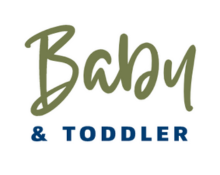
As you know by know breastfeeding is a wonderful way to nourish and bond with your baby, but how exactly do you feed your baby? Here are some steps to guide you through a breastfeeding session:
Find a Comfortable Position: Choose a comfortable spot where you can sit or recline with good back support. Make sure you have pillows or cushions within reach to support your arms, back, and the baby.
Proper Latching: Gently bring your baby close to your breast, aligning their nose with your nipple. Ensure that your baby’s mouth is wide open with their lips flanged outward (like fish lips). Bring the baby’s mouth to your breast, aiming for a deep latch where they take in both the nipple and a portion of the areola. A good latch is important for effective milk transfer and to prevent nipple soreness. We’ll cover latching in more detail in the next lesson.
Feeding Cues and Timing: Watch for hunger cues from your baby, such as rooting, sucking motions, or bringing their hands to their mouth. It’s generally recommended to feed on demand, allowing your baby to nurse whenever they show signs of hunger. In the early weeks, babies may nurse frequently, often every 2-3 hours or more.
Breast Compression: During the feeding, you can use breast compression to encourage milk flow and ensure that your baby is getting enough milk. Simply use your hand to gently compress your breast behind the areola while the baby is actively sucking. This can help deliver more milk and keep your baby engaged during the feeding.
Switching Sides: After your baby has finished nursing on one breast, you can offer the other breast if they are still showing hunger cues. If your baby is content and satisfied after nursing from one breast, you can start with the opposite breast during the next feeding.
Burping: Some babies may benefit from burping during or after a feeding. Gently pat or rub your baby’s back to help release any air bubbles that may have been swallowed during the feeding. Not all babies need to be burped, but it can be helpful if your baby seems uncomfortable or gassy.
Ending the Feeding: Allow your baby to naturally detach from your breast when they have finished feeding. You may notice that your baby appears content, their sucking slows down, or they simply release the nipple. You can then gently break the suction by inserting your finger into the corner of their mouth.
Remember, breastfeeding is a learning process for both you and your baby. It may take time to establish a comfortable routine and find what works best for you both. Don’t hesitate to reach out to a lactation consultant or healthcare professional for guidance, support, and any questions or concerns you may have along the way.
